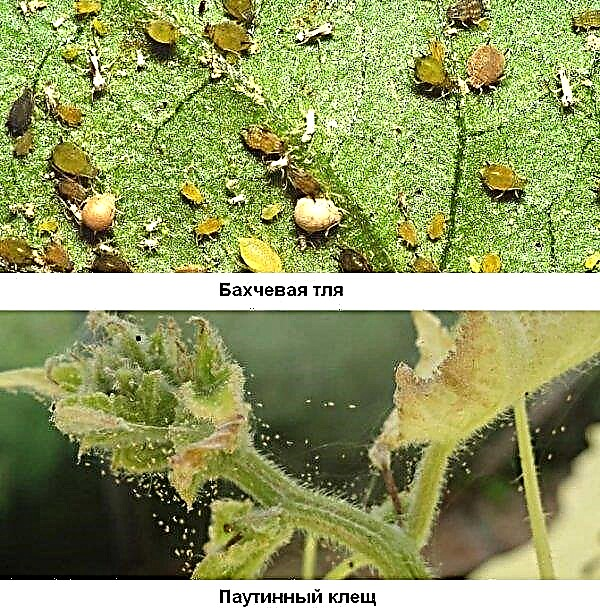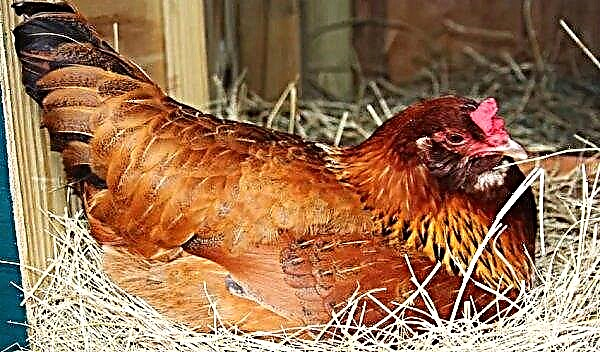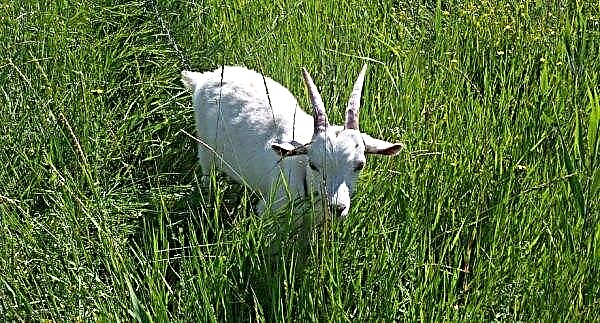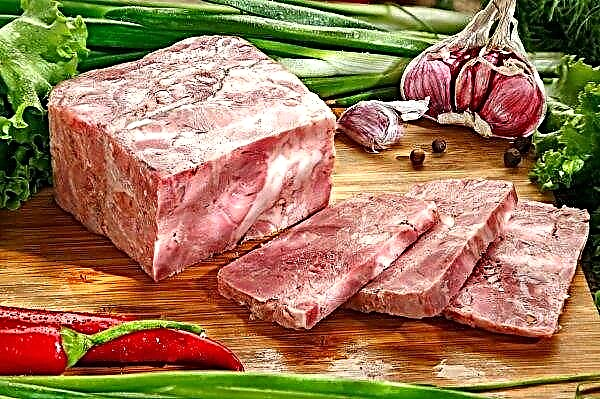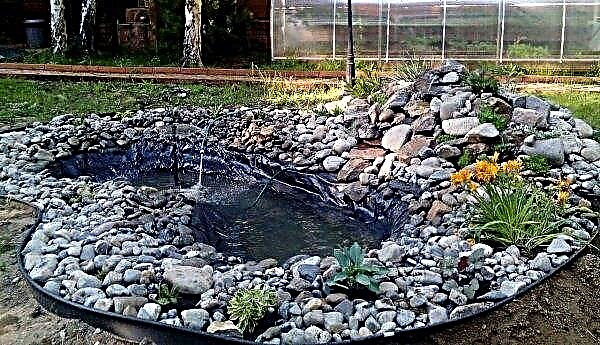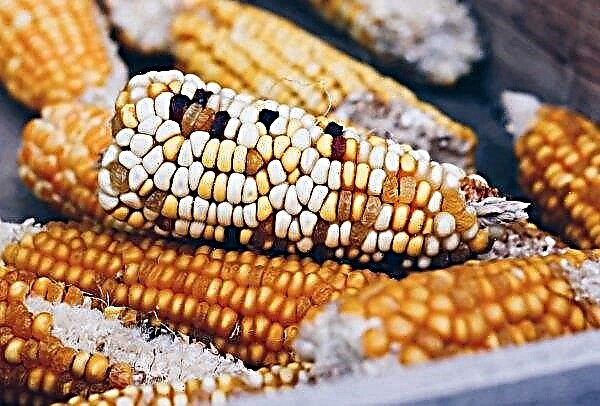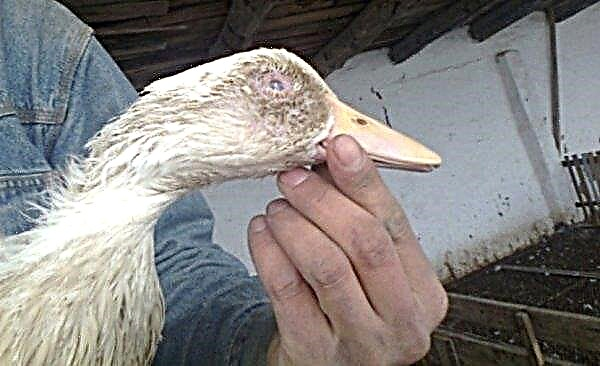Among the many existing ailments affecting cattle, one of the most dangerous is foot and mouth disease, which spreads quite quickly in the middle of the herd, and is even capable of being transmitted to humans. That is why it is extremely important to identify the disease in a timely manner, and take all necessary measures to completely eradicate it.
What is this disease
Foot and mouth disease refers to a virus-infectious disease that can affect all artiodactyls, including wild animals, however, in most cases cattle is susceptible to it. This disease is characterized by fever, salivation, erosion of the mucous membranes, skin and limbs.
Did you know? It is generally accepted that outbreaks of foot and mouth disease occur only in the states of the “third world”. However, it is not. For example, in 2001 an epidemic was recorded in the UK, where more than 4 million animals were killed under the “slaughter”. At the same time, the region’s losses amounted to more than 12 billion dollars.
It should be noted that all animals are negatively affected by the virus, regardless of age, but young animals, pregnant cows, and physically weak individuals are at risk.
History reference
From ancient times, foot and mouth disease was known as an affliction affecting cattle, pigs, goats and sheep. The first mention of it in animals dates back to 1546. The defeat of people with foot and mouth disease was described a little later, in 1764. XVII and XVIII centuries, a disease that proceeded in most cases malignant, was established in European countries.
In the states of the former Soviet Union, foot and mouth disease was discussed in the middle of the 19th century. The causative agent of the disease, the filtering virus, was discovered by biologists Leffler and Frosch in 1897.
Today, outbreaks of foot and mouth disease periodically occur in countries of the European Union, Asia, Africa, and the Russian Federation. For example, in Russia, the last epidemic of foot and mouth disease was recorded in 2005 in the Khabarovsk and Primorsky Territories. The virus was introduced into the country through Mongolia from the People's Republic of China.
Economic damage
Of course, a high percentage of deaths of young cattle, pigs and sheep due to the action of the foot and mouth disease virus is associated with high economic losses.
As a result of the epidemic, young individuals die to a greater extent, in cows productivity decreases by 50–75%, the weight of the animal decreases, the quality of production decreases, most of the cattle abortion.
Special huge losses are brought by quarantine measures, during which an extremely large number of livestock die and losses from losses are counted by millions.
So, for example, during the last outbreak of foot and mouth disease in Russia, tens of hundreds of cattle were destroyed, and the economic damage to the state amounted to over 45 million rubles.
The causative agent, source and routes of distribution
The causative agent of foot and mouth disease is a microscopic virus containing ribonucleic acid, a virus that belongs to the Picornaviridae family, the genus Aftovirus. The virus itself is located in the middle of a special protein capsid, which includes 32 capsomeres.
By its properties, this virus is divided into seven types - O, A, C, CAT-1, CAT-2, CAT-3 and Asia-1, each of which has several more variations. Note that the virus has good resistance to environmental factors. It can be stored in manure for up to 5.5 months, in wastewater - up to 3.5 months, in manure - up to 1.5 months.
It retains activity in the blood of animals up to 40 days, on the coat - about 50 days. At the same time, the virus does not live in a sour-milk environment for a long time, dies within 15 minutes at temperatures above + 37 ° C, at + 90 ... + 100 ° C it is destroyed instantly.
To eliminate the virus in the premises, the use of special disinfectants, for example, 2% sodium hydroxide or 1% formaldehyde solution, is considered the best option.
Important! Since the virus is constantly evolving and developing, the number of its variations is increasing every year. Therefore, if an animal has been ill with one of the types of foot and mouth disease, then the likelihood that it will not further become infected with another type of ailment is not excluded.
Among the main sources of foot and mouth disease can be noted:
- animals that are already directly infected with the virus, including those that are in the incubation stage;
- carrier animals, that is, those that have previously been ill with foot-and-mouth disease and are considered potentially dangerous for one year after treatment.
 In an infected individual, the virus can be found in milk, saliva, waste products, which is why it can easily and quickly spread in the environment. In turn, the passive carrier of foot and mouth disease can be people, domestic animals - cats or dogs, birds, rodents.
In an infected individual, the virus can be found in milk, saliva, waste products, which is why it can easily and quickly spread in the environment. In turn, the passive carrier of foot and mouth disease can be people, domestic animals - cats or dogs, birds, rodents.Household items, agricultural implements, cowsheds, fences, ponds also constitute a potential threat.
Obviously, there are many ways in which animals can become infected:
- human clothing, equipment;
- as a result of contact with infected parts of the udder, limbs, mucous membranes;
- by airborne droplets from an infected individual;
- contaminated feed or water.
Signs of foot and mouth disease in cows
As a rule, foot and mouth disease is quite acute and is characterized by a special clinical picture. The incubation period varies from 1 day to a week, after which the animal begins to show signs of illness.
In cattle, foot and mouth disease can occur in two forms: benign and malignant. Let's look at the symptoms of both.
Benign form
In order for the first signs of infection with the virus to appear, a few days are enough. First of all, the animal loses its appetite, it slows down the process of chewing food and there is a sharp increase in temperature to + 40 ... + 41 degrees. In addition, with a typical (benign) form, symptoms such as:
In addition, with a typical (benign) form, symptoms such as:
- accelerated pulse and rapid breathing;
- redness and severe drying of the mucous membranes of the mouth;
- a significant decrease in milk productivity;
- intense thirst;
- copious salivation;
- the appearance of small rashes in the form of pimples with transparent contents in the mouth, on the nose and on the wings of the nose. After a few days, pimples burst and erosion forms in their place;
- the appearance of lameness when moving;
- edema of the lower extremities, with a place of localization around the hooves;
- nervousness of the animal, the occurrence of nervous disorders, tachycardia.
A typical form of foot and mouth disease, with adequate timely treatment and proper care, results in death in only 0.5% of cases. Therapy in combination with high-quality content allows you to completely cure the animal 3-4 weeks after infection.
Did you know? The first modern case of human infection with foot and mouth disease was recorded in 1966 in the UK, when a farm worker named Bobby Bruce drank milk from a sick cow. 4 days after this, he began to manifest characteristic signs: fever, the appearance of blisters on his hands and mucous membranes.
Malignant
More dangerous, especially for young animals, is the malignant form of the course of the virus, in which the mortality of individuals is over 70%.
With a malignant course, the symptoms characteristic of a benign course are also added:
- severe disturbances in the work of the cardiovascular system, among which the most dangerous is paralysis of the heart;
- pathology in the functioning of the circulatory system;
- the appearance of seizures;
- apathetic and depressed cattle;
- wheezing in the lungs, the appearance of shortness of breath.
 It should be noted that young cattle are ill a little uncharacteristically: they do not have erosion, and instead gastroenteritis develops, sepsis forms, and myocarditis appears. Newborn babies refuse food, as a result of which, more than 60% of them die during the first days after infection.
It should be noted that young cattle are ill a little uncharacteristically: they do not have erosion, and instead gastroenteritis develops, sepsis forms, and myocarditis appears. Newborn babies refuse food, as a result of which, more than 60% of them die during the first days after infection.Diagnostics
Early diagnosis of the virus minimizes herd mortality and maintains good health for all animals.
You can diagnose foot and mouth disease:
- by visual signs typical of this ailment;
- through laboratory tests, by collecting biological material from a suspected infected animal;
- using epizootological information.
Diagnoses of an already dead animal can be made by studies conducted after autopsy.
In most cases, the appearance of a rash in the animal’s mouth and limbs, changes in its behavior, excessive salivation, refusal to feed should alert the farmer and cause him to suspect the development of foot and mouth disease.
Important! The presence of rashes in the form of vesicles with fluid on the mucous membranes or limbs does not always indicate infection with foot and mouth disease. Some diseases, such as stomatitis, smallpox, or plague, are also characterized by similar symptoms.
Nevertheless, the final diagnosis is established in a comprehensive manner, based on the results and signs of all of the above studies.
Pathological changes
When conducting a pathological study in an infected animal, you can find small erosions, aphthae in the mouth, nose, nose wings, lips, in places where there is no hairline, on the nipples of the udder, and in rare cases around the anus.
If foot and mouth disease proceeded in a malignant form, then the heart muscle and all muscles underwent pathological changes. As a rule, in such cases, the cause of death was myocardial damage.
Degenerative changes are also found in the kidneys and liver. In particularly difficult cases, hemorrhages can be detected in the lungs, intestines, kidneys, brain and spinal cord.
Treatment
Treatment of foot and mouth disease is based on the elimination of the main symptoms of the disease and the provision of quality care to animals. If a virus is detected, a quarantine is declared on the farm during which it is forbidden to bring new animals or take out old ones.
General events
After a diagnosis of foot and mouth disease is made, comprehensive treatment of animals should be started, and, first of all, organizational measures should be taken:
- diseased individuals are transferred to a separate room and provide them with complete peace;
- in the room where infected individuals are located, they create high-quality conditions: comfortable temperature, good ventilation, a certain level of humidity;
- provide "patients" with special diet food aimed at strengthening immunity;
- monitor the water balance and prevent dehydration;
- special buns made from silage, flour and fresh grass are introduced into the diet.
 In order to protect cattle from nervous tension, they are soldered with valerian to calm them.
In order to protect cattle from nervous tension, they are soldered with valerian to calm them.Means for fighting
In addition to providing quality conditions of food and nutrition, in the fight against foot and mouth disease, farmers use a number of special tools, in particular, they carry out decontamination of the affected areas:
- for mucous membranes: apply solutions - 2% acetic acid, 0.1% potassium permanganate and 0.5% furatsilina. Moreover, if the wounds cause intense pain in the animal, then they are anesthetized with novocaine, anestezin or copper sulfate, mixed in 1: 2 proportions with any base - petrolatum, fish oil, etc .;
- for limbs: A mixture made from equal parts of tar and fish oil is great. It is also recommended to use therapeutic baths, which are based on a solution of 2% formaldehyde, 0.5% sodium hydroxide or 2% lysol.
All the procedures listed above are performed every day until the symptoms disappear completely.
Of course, in addition to local external treatment, infected animals are given special medications:
- lactoglobulin;
- FMD Imunolactone;
- serum made from the blood of previously ill individuals.
In severe illness, cows are given heart medications to restore normal functioning of the cardiovascular system. Some farmers solder animals with honey or make intravenous injections with glucose.
Foot and mouth disease vaccinations
Specific prophylaxis of foot and mouth disease is, of course, vaccination, for which hyperimmune serums or vaccines made from the blood of previously ill animals have been developed.
The vaccine, which is being made for the first time, begins to act actively 21 days after the introduction and remains valid for one year. To vaccinate during the onset of the disease, it is already impractical.
For immunization, herds are used, depending on epizootic signs, poly-, bi- and monovalent sera, which are given according to certain schemes, according to the instructions for the preparations.
Important! Vaccination should be carried out with a drug that contains a type of virus that is similar to the type of diseased individual.
It should also be noted that vaccination of one animal cannot completely eliminate signs of virus transmission among others. To do this, vaccinate the entire herd at the same time.
Other preventive measures
The most effective methods of combating the virus of foot and mouth disease are considered to be timely prevention, which consists of such measures:
- preventing the virus from entering from the outside;
- maintaining sanitary conditions in the premises where the cattle is;
- providing animals with high-quality, balanced feed;
- timely destruction or isolation of possible carriers: rodents, birds, wild animals;
- if foot-and-mouth disease is detected, quarantine is introduced and police and veterinary posts are set up;
- isolation of a sick individual from the rest of the herd;
- disinfection of all premises, equipment, clothing, household items;
- vaccination in close to quarantine zones, with further monitoring of the immune background;
- liquidation of infected livestock;
- complete destruction of the meat of infected animals.
Foot and mouth disease refers to rather serious ailments that pose a danger not only to the animals themselves, but also to humans. When breeding cattle, it is extremely important to know the typical symptoms of the disease in order to prevent the spread of the virus in time and take competent measures to treat individuals. In addition, the timely identification of the disease will stop its spread to huge farmers' areas.
In addition, the timely identification of the disease will stop its spread to huge farmers' areas.



